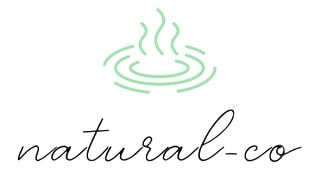Why Scrub Daddy Became the Most Successful Brand Emoji in Consumer Product History
“Scrub Daddy didn’t become a bestseller because it’s a sponge.
It became a bestseller because it’s a feeling.”
When I think about Scrub Daddy, I don’t see a cleaning tool. I see an emoji — a perfectly designed emotional shortcut packaged inside a household product. And I believe that’s why Scrub Daddy didn’t just sell well… it became a cultural artifact.
Why Did Scrub Daddy Become the World’s First “Emoji Product”?
Most brands try to act friendly. Scrub Daddy is literally smiling at you. But this isn’t just cute design. The smile is a functional UX decision:
-
The eyes act as finger grips
-
The mouth cleans utensils
-
The circle shape fits any hand size
It’s function + emotion — the golden formula.
The Human Brain Is Hardwired for Faces
This isn’t pop psychology; this is neuroscience. When you see the Scrub Daddy face:
-
Your fusiform gyrus activates (the face-recognition center)
-
It triggers familiarity
-
Familiarity triggers trust
-
Trust triggers purchase impulse
That smile hijacks your survival-era social wiring.
This isn’t marketing.
This is biology.
Scrub Daddy Is the Only Cleaning Product That Works Like a Reaction Emoji
The smile means different things depending on the person:
-
“I’m cute — buy me!”
-
“Cleaning doesn’t have to be painful.”
-
“I’m friendly, not boring like a gray sponge.”
-
“Your kitchen is safe and happy.”
Scrub Daddy functions as an emotional reframe. It transforms cleaning into something less miserable.
That’s not branding. That’s therapy.
It Was Designed for TikTok Before TikTok Existed
Scrub Daddy has:
-
Color contrast
-
Satisfying transformations (soft → stiff → soft)
-
Visual ASMR potential
-
A face with emotional range
-
Memes built into its shape
Creators don’t need to “invent” a story. The product is the story.
If you look at how meme products take off today — Stanley cups, PopSockets, water bottles — Scrub Daddy beat all of them to the punch.
Lori Greiner Turned a Smile Into a Distribution Empire
Scrub Daddy’s smile became:
-
A QVC mascot
-
A Shark Tank legacy symbol
-
A retail icon
-
A social media mood
You can’t coach this.
You can’t replicate it.
This is lightning-in-a-bottle brand energy.
Lori didn’t just invest. She scaled the emoji.
Kids Love It — And Kids Control the Household Cart
Smart founders study what’s in a child’s line of sight.
Scrub Daddy is:
-
bright
-
round
-
smiling
-
friendly
-
harmless
-
toy-like
Kids pick it up in the store. Parents buy it.
I call this pester-power branding — the kind that quietly drives billions.
It Became a Mood In the Kitchen
Most cleaning products signal: “Work.”
Scrub Daddy signals: “Joy.”
When you look at the face, you feel good — just enough dopamine to remove the friction of starting a chore.
That small shift = repeated use + repeated purchase.
My Final Take — Scrub Daddy Didn’t Just Sell Sponges; It Sold Happiness
Scrub Daddy is proof that: the most powerful brand isn’t the one you remember — it’s the one that looks back at you. The emoji-like face, the bright color, the tactile feel, the ASMR-friendly texture… it turned a disposable cleaning sponge into a cultural symbol.
And in my opinion?
Scrub Daddy is the first household product that became a global emoji —
and the only one to build a $600M empire on a smile.

